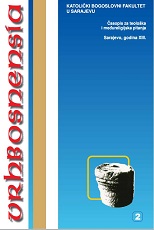VEĆINE I MANJINE U POSTKOMUNISTIČKIM DRUŠTVIMA
MAJORITIES AND MINORITIES IN POSTCOMMUNIST SOCIETIES
Author(s): Mato ZovkićSubject(s): Christian Theology and Religion
Published by: Katolički bogoslovni fakultet
Keywords: minority; majority; majority people; majority religion; guidelines of UN and of the Council of Europe; migrants; Catholic social teaching; justice; ethnic and religious identity
Summary/Abstract: This is a presentation prepared for the Conference on “Challenges to Churches and Society in the Post-communist Context”, organized by the Evangelical Theological Faculty in Osijek, Croatia, October 28-31, 2009. After the communist regime collapsed in 1989-1991, the countries of South, Central and East Europe emerged as nation states with majority peoples and religions. These states have yet to develop into true democracies with pluralistic civil societies. According to sociological research, majority religions in these societies claim the right to an almost exclusive presence among their respective peoples and they discriminate against minority religions or new religious movements. Despite existing tensions, however, religions can contribute toward building shared values and social cohesion. In illustrating his view, the author relies on the 1992 Catechism of the Catholic Church and the 2004 Compendium of the Social Doctrine of the Church. In the second part of the article he brings out the guidelines of the UN and the EU on the protection of national and religious minorities. In conclusion, he suggests that teachers of religion, priests and imams in the countries or regions of a respective majority should educate their own believers so that they actively support minorities.
Journal: Vrhbosnensia
- Issue Year: 2009
- Issue No: 2
- Page Range: 259-272
- Page Count: 14
- Language: Croatian

